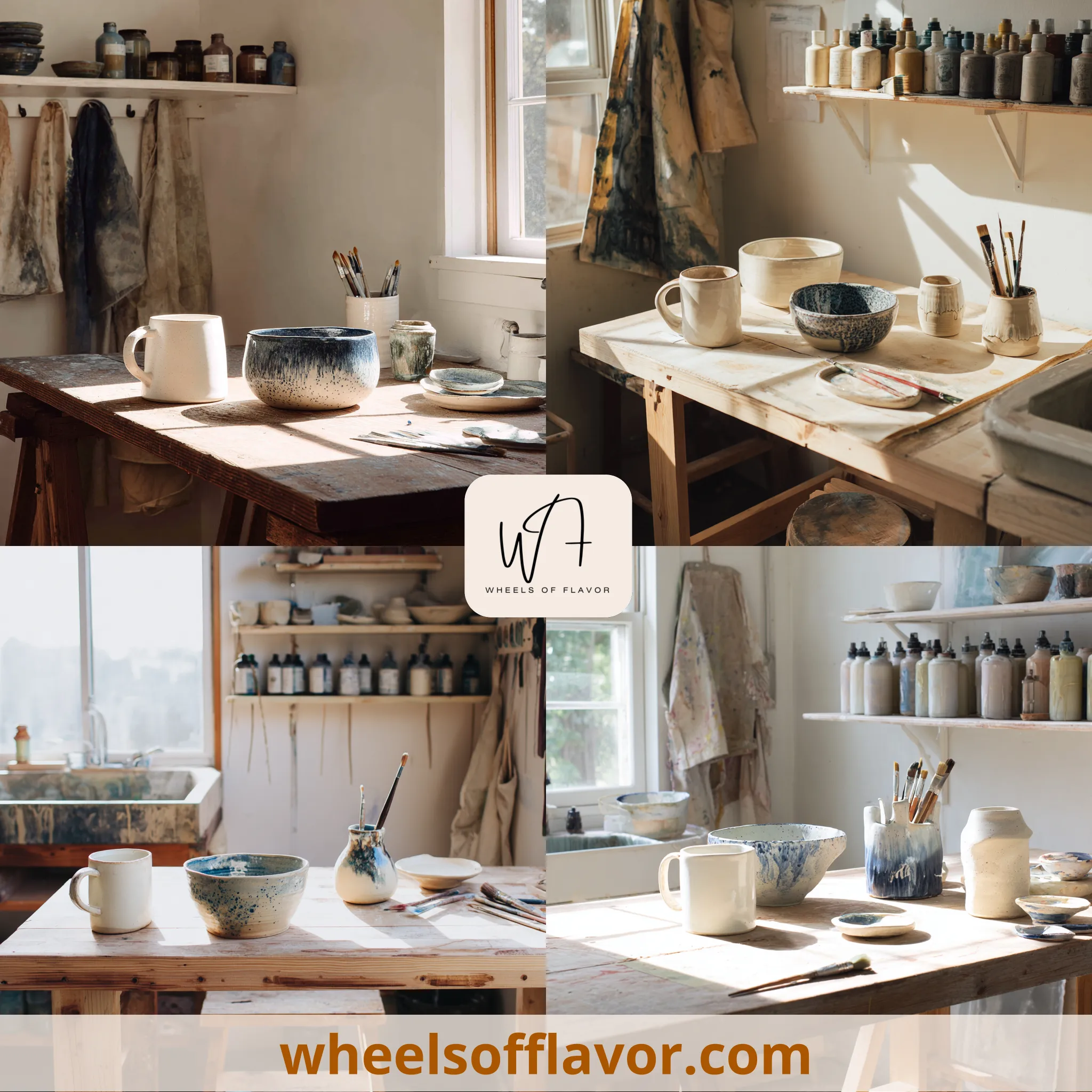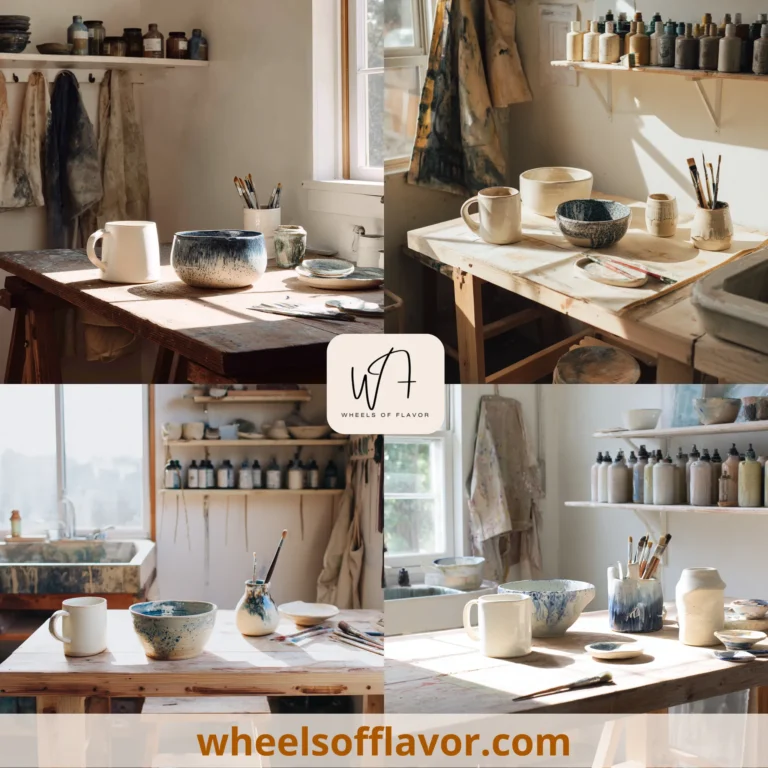
Pottery glazing can feel intimidating, especially for beginners who worry about complex techniques. But simple pottery glaze designs ideas make the process accessible and fun. These approaches focus on easy application, minimal tools, and stunning results that anyone can achieve. Whether you’re new to ceramics or looking for quick projects, embracing simplicity reduces stress and boosts creativity. Glazing is essential for finishing pottery—it seals the clay, adds color, and makes pieces functional. With simple designs, you don’t need advanced skills or expensive materials. Instead, you can experiment with basic methods like dipping, brushing, or layering glazes to create unique effects. This guide explores how uncomplicated ideas can transform plain pottery into beautiful, personalized items. We’ll cover techniques that are perfect for home studios or classes, emphasizing practicality and enjoyment. By starting small, you build confidence and develop your style over time. Plus, simple designs often yield elegant, timeless pieces that fit any decor. Let’s dive into how these ideas can make pottery glazing a rewarding part of your creative journey.
Easy Dipping Techniques for Simple Pottery Glaze Designs Ideas
Dipping is one of the most straightforward methods for applying simple pottery glaze designs ideas. It involves submerging your bisque-fired pottery into a container of glaze, ensuring even coverage with minimal effort. This technique is ideal for beginners because it requires no special brushes or tools—just a steady hand and a deep bucket. Start by choosing a single glaze color for a clean, uniform look. For example, a matte white or glossy blue glaze can create a sleek finish that highlights the pottery's shape. To add variation, try double-dipping: dip part of the piece in one color, let it dry, then dip another section in a contrasting glaze. This creates natural lines and gradients without complex steps. Safety is key—wear gloves and work in a well-ventilated area to avoid inhaling glaze particles. For best results, mix your glaze thoroughly to prevent settling, and hold the pottery firmly to avoid drips. Dipping works well for mugs, bowls, and vases, giving them a professional appearance. It's also time-efficient; you can glaze multiple pieces in one session. If you're new to this, practice on test tiles first. Many potters find that dipping leads to consistent outcomes, making it a cornerstone of simple pottery glaze designs ideas. For more tips, check out this guide from The Pottery Wheel, a trusted resource for ceramic artists.
Brush-On Methods to Enhance Simple Pottery Glaze Designs Ideas
Brush-on glazing offers precise control for simple pottery glaze designs ideas, allowing you to add details like stripes, dots, or patterns with ease. Unlike dipping, brushing lets you target specific areas, making it perfect for decorative accents. Use soft-bristle brushes in various sizes—a wide brush for large surfaces and a fine tip for intricate work. Begin with a base coat applied via dipping or pouring, then use brushes to overlay designs. For instance, try freehand stripes in a complementary color on a cup, or dab on polka dots with a sponge brush for a playful touch. Water-based glazes are best for brushing because they flow smoothly and dry quickly. Remember to apply multiple thin layers rather than one thick coat to prevent cracking or bubbling during firing. This method encourages experimentation; you can create ombre effects by blending glazes wet-on-wet or use masking tape for sharp edges. It's also great for adding personal touches, like initials or simple motifs, to handmade gifts. Brush-on techniques are versatile and require minimal supplies, fitting well into a DIY setup. They empower you to customize pieces without advanced skills, embodying the spirit of simple pottery glaze designs ideas. As you practice, you'll discover how small brush strokes can make a big impact. Explore our related post on hand-building techniques at https://wheelsofflavor.com/basic-pottery-methods for more inspiration.
Layering Glazes for Dynamic Simple Pottery Glaze Designs Ideas
Layering glazes is a powerful way to achieve depth and complexity with simple pottery glaze designs ideas. By applying multiple glaze coats, you can create rich colors, textures, and surprises after firing—all with basic steps. Start with a primary glaze layer, such as a transparent or light-colored base, and let it dry completely. Then, add a second layer in a different color or finish, focusing on areas like rims or handles for emphasis. For example, a celadon glaze over a white base can produce subtle variations, while a glossy topcoat on a matte underlayer adds contrast. The key is to test combinations on small tiles first, as glazes interact unpredictably in the kiln. Some pairs might bleed into each other, forming organic patterns, while others stay distinct. This approach minimizes the need for intricate techniques; even random layering can yield beautiful results. It's also cost-effective, as you use small amounts of multiple glazes. Layering works wonders on functional items like plates or planters, making them visually interesting without overpowering designs. Keep notes on your experiments to replicate successes. This method ties into simple pottery glaze designs ideas by showing how easy overlaps can elevate simple forms. As you gain confidence, try triple layers for more drama. Remember, patience during drying prevents smudging, ensuring crisp outcomes.
Conclusion
Simple pottery glaze designs ideas prove that you don't need complexity to create beautiful ceramics. By focusing on techniques like dipping, brushing, and layering, anyone can achieve stunning finishes with minimal stress. These methods emphasize accessibility, allowing beginners to build skills gradually while producing pieces they're proud of. The joy of pottery lies in the process—experimenting with colors, textures, and forms in a manageable way. As you continue, you'll find that simplicity often leads to the most timeless designs, adaptable to various styles from modern to rustic. Looking ahead, consider integrating these ideas into regular practice; set aside time for glaze tests or join a local pottery group to share insights. The future of DIY ceramics is bright, with more resources available online and in communities. Remember, every master potter started with simple steps. Embrace the journey, and let these ideas inspire your next project. For ongoing support, revisit the basics and keep exploring—your unique style will emerge naturally.
Frequently Asked Questions
Q: What are the best glazes for beginners trying simple pottery glaze designs ideas?
Beginner-friendly glazes include those labeled as 'stable' or 'easy-fire,' such as single-color matte or gloss finishes that don't require precise temperature control. Water-based glazes are ideal because they're non-toxic and easy to clean. Start with basic colors like white, blue, or green, which are forgiving and versatile. Avoid glazes with heavy metallic content or complex chemicals until you're more experienced. Testing on small tiles first helps you understand how they behave.
Q: How can I avoid common mistakes when applying simple pottery glaze designs ideas?
Common mistakes include applying glaze too thickly, which can cause cracking or dripping, or not letting layers dry completely between applications. To prevent this, use thin, even coats and allow adequate drying time. Also, ensure your bisque-fired pottery is clean and dust-free before glazing. Work in a well-ventilated space and wear protective gear. Practice on test pieces to refine your technique without risking finished work.
Q: Can I use household items for simple pottery glaze designs ideas if I don't have professional tools?
Yes, many household items can substitute for professional tools. For example, use old brushes for applying glaze, sponges for dabbed effects, or even string for resist techniques where you wrap it around pottery before glazing to create patterns. Containers like jars or buckets work for dipping small items. However, ensure items are clean and dedicated to pottery to avoid contamination. While professional tools offer precision, improvisation can spark creativity in simple designs.

